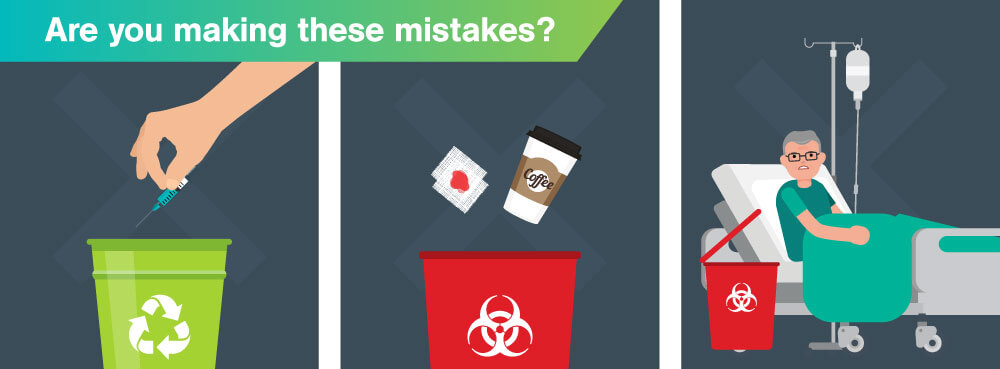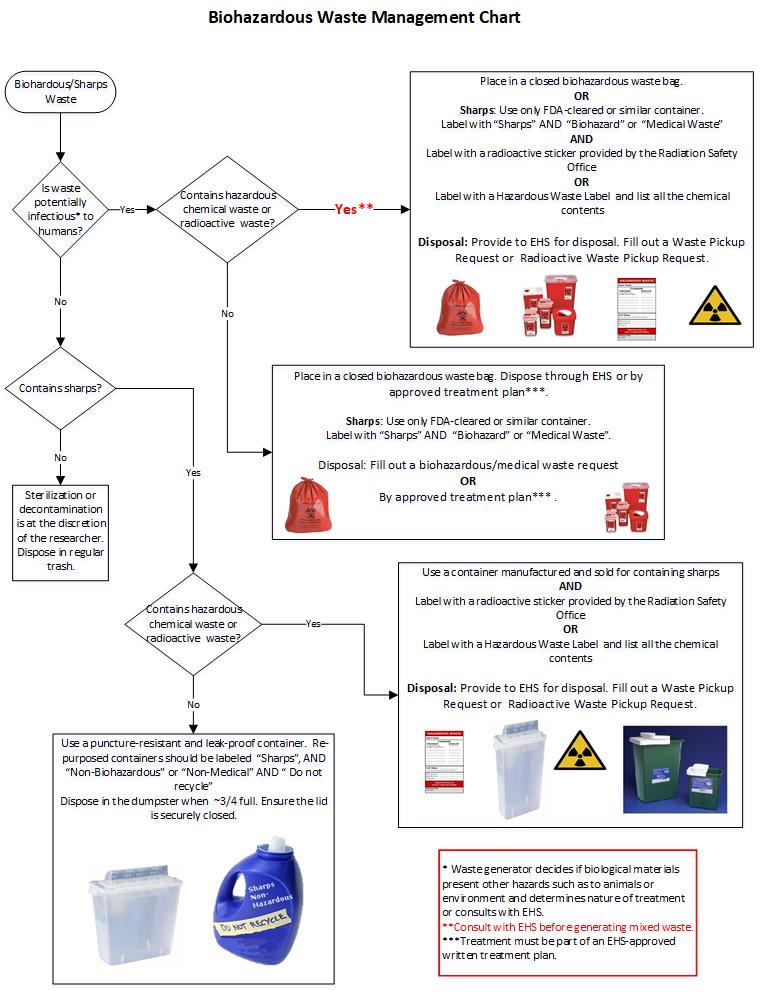Reliable Methods of Medical Waste Disposal
Effective methods of medical garbage disposal are crucial in maintaining public health and wellness and ecological security. Clinical waste, including sharps, pathological waste, and pharmaceutical waste, have to be managed and disposed of correctly to avoid the spread of infections and shield the environment. This requires adherence to strict policies and the application of expert waste administration methods.
Appropriate partition of clinical waste, safe and secure and secure storage space, reliable therapy and sanitation techniques, and environmentally-friendly disposal choices are crucial elements of an efficient clinical garbage disposal system. Expert waste administration services play a vital role in guaranteeing compliance with policies and lessening the threats linked with improper disposal. By using these methods, medical care centers can add to a more secure and cleaner setting while guarding the health of the area.
Appropriate Segregation of Medical Waste
Appropriate segregation of medical waste is essential for ensuring the efficient and safe disposal of these possibly unsafe products. Medical waste describes any type of waste generated throughout health care activities, such as health centers, facilities, labs, and research centers. It includes a vast variety of materials, such as made use of needles, syringes, polluted dressings, ran out or unused medications, and organic materials.
By setting apart clinical waste, health care facilities can decrease the danger of infections, injuries, and environmental contamination. The procedure involves classifying waste into various types, such as sharps, infectious waste, pharmaceutical waste, and non-hazardous waste. Each kind calls for certain handling, product packaging, and disposal methods to protect against exposure to health care employees, waste administration employees, and the general public.
To guarantee proper partition, health care facilities ought to create clear guidelines and offer adequate training to team member. This includes enlightening staff members on the different waste categories, proper product packaging techniques, and making use of appropriate containers - WasteX Medical Waste Disposal. Additionally, clear signage and color-coding systems can be carried out to facilitate the identification and segregation of different waste types
Safe and Secure Storage Space of Medical Waste
Safe and safe and secure storage space of clinical waste is essential for preserving the stability and control of possibly unsafe products. Correct storage space not just protects healthcare workers and the general public from exposure to harmful compounds however additionally protects against ecological contamination.
To guarantee risk-free storage space, clinical centers need to stick to certain standards. Firstly, waste ought to be kept in puncture-resistant and leak-proof containers that are classified appropriately. These containers ought to be tightly sealed to protect against any kind of leak or spills. Furthermore, the storage location must be safe and unattainable to unauthorized employees, decreasing the threat of accidental direct exposure.
Appropriate segregation of clinical waste is likewise important for secure storage space. Different types of waste, such as sharps, contagious products, and pharmaceutical waste, must be divided to avoid cross-contamination. This partition can be accomplished through the use of color-coded containers or containers.
Normal surveillance and evaluation of the storage space area are essential to determine any kind of prospective threats or breaches. This consists of monitoring for signs of damages or wear and tear in the containers, making certain appropriate air flow, and keeping an eye on temperature level and humidity levels.
Reliable Treatment and Disinfection Approaches

One generally made use of therapy method is autoclaving, which involves subjecting the waste to high-pressure steam at temperatures above 121 degrees Celsius. This process efficiently kills bacteria and ruins contagious agents, making the waste risk-free for additional disposal. One more method is incineration, which involves shedding the waste at high temperature levels. Incineration not just eliminates microorganisms but also reduces the waste quantity via burning.
Chemical sanitation is one more effective method for dealing with medical waste. This method entails making use of disinfectants such as chlorine compounds, phenolic substances, or hydrogen peroxide to kill or inactivate virus (WasteX Medical Waste Disposal). Chemical disinfection is often utilized for liquid waste, such as research laboratory samples or physical fluids
In recent times, alternate therapy techniques such as microwave disinfection, irradiation, and organic therapy have additionally gotten attention. These techniques offer benefits such as reduced ecological influence and energy intake compared to traditional techniques.
Environmentally-friendly Disposal Options
In the world of medical garbage disposal, thinking about environmentally-friendly options is vital. Medical care facilities create a considerable amount of waste, consisting of infectious products, pharmaceuticals, and chemicals, which can present major threats to human health and wellness and the setting if not taken care of correctly. Fortunately, there are numerous environmentally-friendly disposal options offered that can help alleviate these threats.
One such alternative is recycling. Recycling clinical waste involves segregating and refining particular materials for reuse or repurposing. Plastics, glass, and metal containers can be recycled, minimizing the need for brand-new materials and lessening the quantity of waste sent out to landfills. Furthermore, some healthcare facilities have carried out reusing programs for sure clinical tools or devices, more reducing waste generation.
This technique includes converting medical waste right into power with processes like her response incineration or anaerobic food digestion. Anaerobic food digestion, on the other hand, breaks down organic waste in the lack of oxygen, generating biogas that can be made use of for power or warm generation.

Advantages of Professional Waste Monitoring Solutions
One significant advantage of professional waste monitoring services is the boosted effectiveness in disposing and taking care of of medical waste. Medical care facilities create a significant quantity of waste that includes harmful materials, such as sharp items, contaminated products, and possibly infectious waste. medical waste disposal service. Improper handling and disposal of clinical waste position significant health and wellness threats to workers, patients, and the public. By utilizing professional waste administration services, medical care centers can ensure that all clinical waste is dealt with and dealt with appropriately, minimizing the danger of contamination and the spread of illness.
Specialist waste monitoring solutions use trained and skilled employees that are educated concerning the laws and standards for clinical garbage disposal. They have accessibility to customized tools and devices that allow them to manage various sorts of medical waste safely and effectively. These services likewise have well-established treatments and procedures in location to make certain that waste is set apart, packaged, delivered, and disposed of in compliance with regional, state, and federal guidelines.
In addition, professional waste administration solutions can provide health care facilities with detailed waste administration services. They can supply solutions such as waste collection, therapy, transport, and disposal, tailored to the particular requirements and demands of the facility. This eliminates the concern of handling waste inside, allowing healthcare team to concentrate on providing high quality person care.
Verdict
In verdict, effective methods of medical waste disposal include appropriate partition, secure storage space, treatment and disinfection, and environmentally-friendly disposal options. These techniques ensure the risk-free handling and management of medical waste, avoiding the spread of infections and securing the atmosphere.
Medical waste, including sharps, pathological waste, and pharmaceutical waste, need to be taken care of and disposed of correctly to prevent the spread of infections and secure the setting.Correct segregation of medical waste, protected and risk-free storage, effective treatment and disinfection methods, and environmentally-friendly disposal alternatives are vital parts of a reliable clinical waste disposal system. The procedure includes categorizing waste into various kinds, such as sharps, contagious waste, pharmaceutical waste, and non-hazardous waste. By using expert waste management solutions, medical care centers can guarantee that all medical waste is handled and disposed of effectively, decreasing the danger of contamination and the spread of diseases.
Specialist waste monitoring services employ knowledgeable and skilled personnel that are educated regarding the regulations and standards for medical waste disposal.